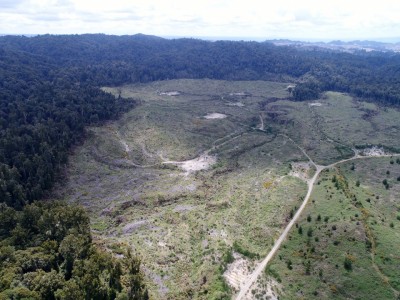Determining the balance between active and passive indigenous forest restoration after exotic conifer plantation clear-fell

In Aotearoa/New Zealand, there is a desire to re-establish indigenous forests when some exotic conifer plantations are clear-felled. Large-scale indigenous forest restoration by planting is potentially costly and logistically demanding and there is therefore a need to find an optimal balance between active and passive restoration.
We collected field data across 206 ha of exotic conifer plantation clear-fells to model the spatial distribution of indigenous tree species regeneration and weed cover importance values (IV) as measures of ecosystem resilience. Strong relationships were found between site factors (i.e., elevation, slope, slope aspect, distance from seed source, and clear-fell age) and our measures of resilience in clear-fells. We therefore used these modelled relationships, along with GIS layer generated site factors, to map potential indigenous regeneration and weed cover IV on the nearby 583-ha Ngāti Whare restoration area.
These maps show the balance between active and passive restoration that will be required when the restoration area is clear-felled. Active restoration would require that seedlings are planted across 48% of the restoration area, along with appropriate weed control, while passive restoration, with just weed control, would be required on 52% of the area.
To our knowledge, this approach has not been applied elsewhere to indigenous forest restoration and this study provides a template for guiding future landscape scale restoration projects.
You can download a .pdf file of the article for free for 50 days, via this link: